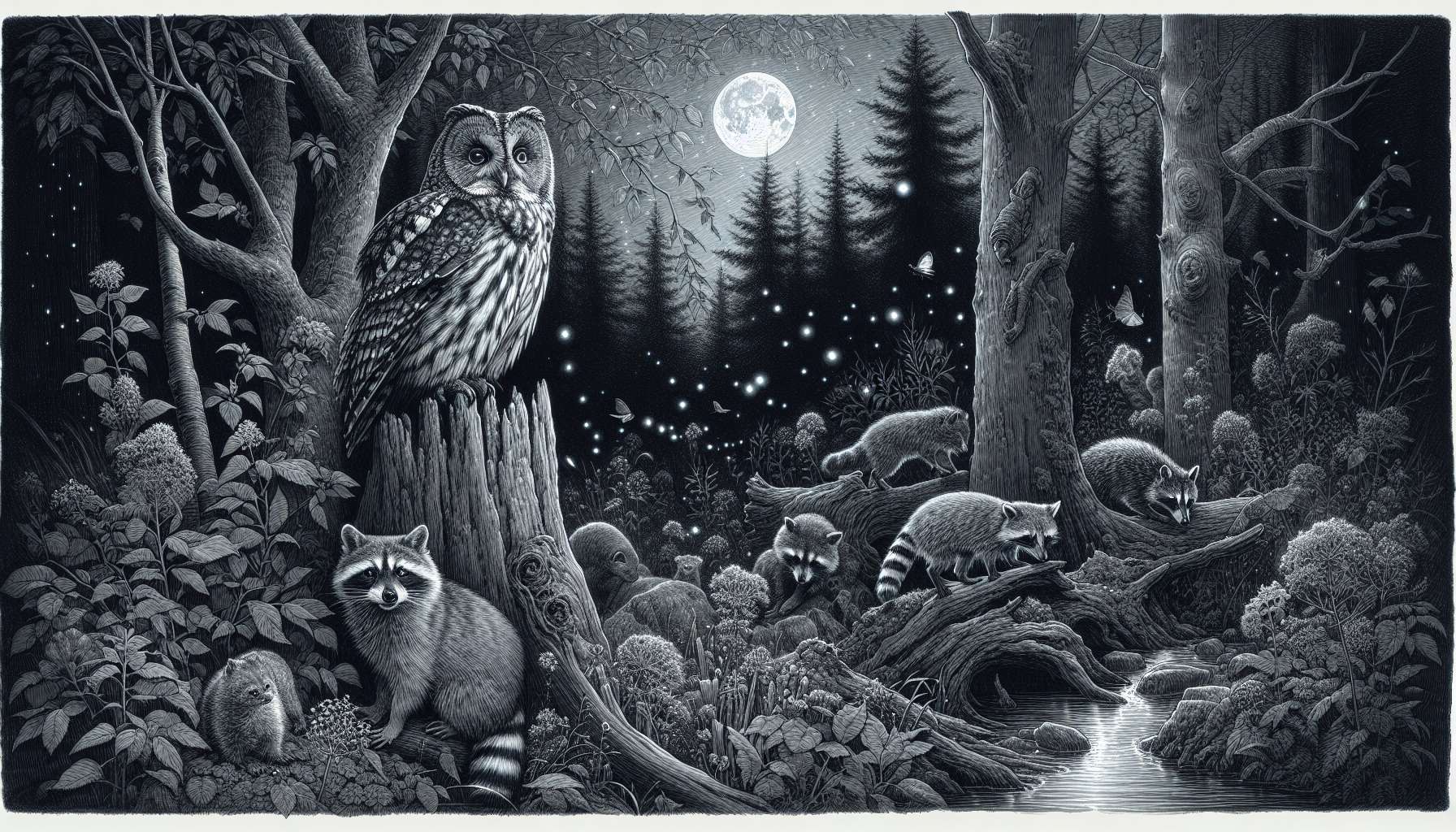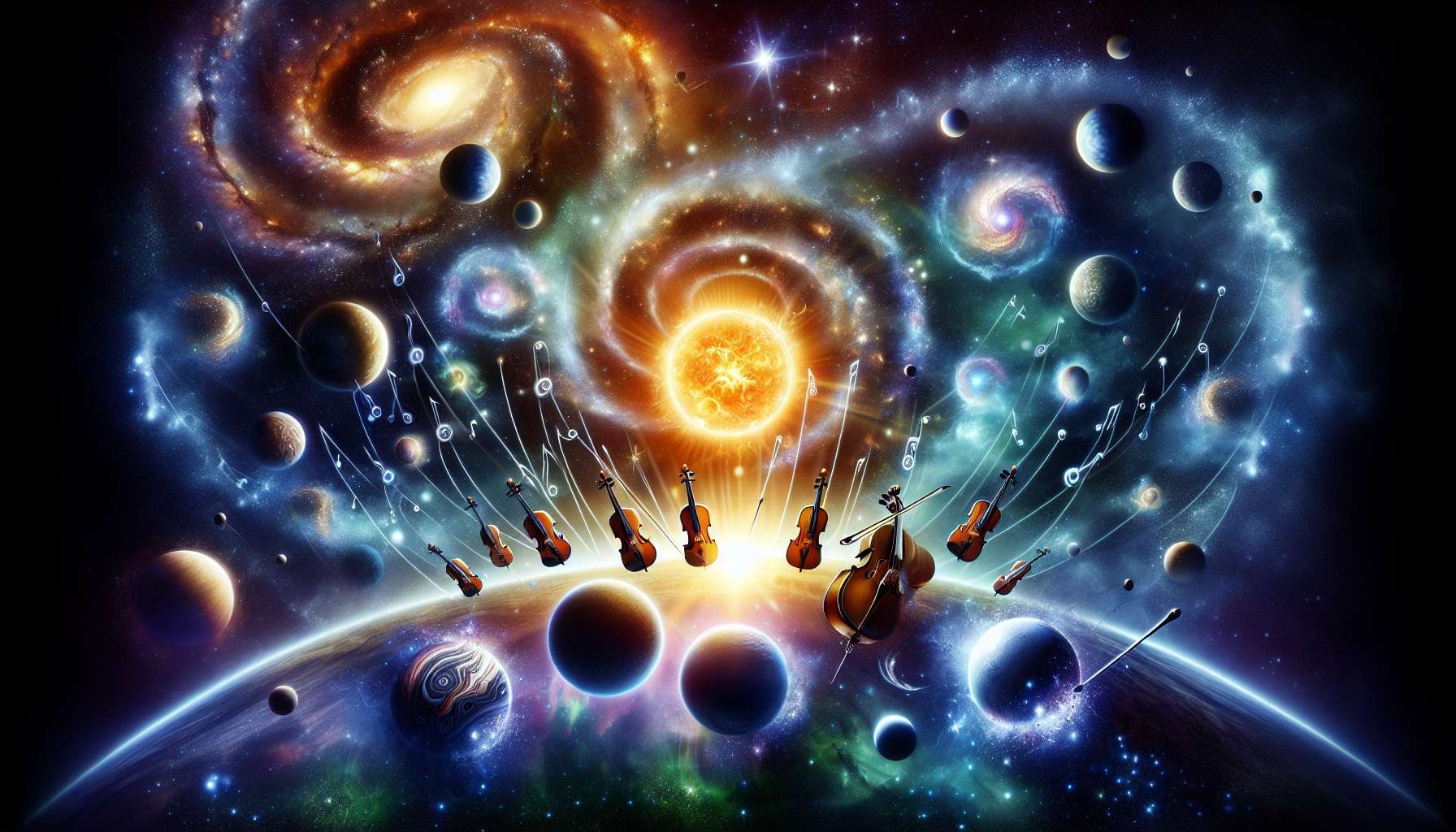Nocturnal Nature Studies: Exploring the Wonders of the Night
When the sun sets and darkness envelopes the world, a whole new realm of nature awakens. Nocturnal creatures begin their nightly activities, plants release fragrances under the blanket of stars, and the landscape transforms into a mysterious and captivating environment. Nocturnal nature studies delve into this hidden world, unlocking the secrets of the night and shedding light on the creatures and phenomena that thrive when most of us are fast asleep.
Have you ever wondered what goes on in the forest at midnight, or how nocturnal animals navigate in the dark? In this comprehensive guide, we will explore the fascinating realm of nocturnal nature studies, uncovering the wonders of the night and the valuable insights it provides into the natural world.
The Magic of the Night Sky
One of the most captivating aspects of the nocturnal world is the night sky. With its glittering stars, constellations, and occasional meteor showers, the night sky offers a breathtaking view that has inspired poets, artists, and scientists for centuries. Nocturnal nature studies often involve stargazing, which not only provides a sense of wonder and awe but also offers valuable insights into the universe.
Stargazing allows researchers to study celestial bodies, track movements of planets and stars, and even discover new phenomena such as comets or asteroids. Amateur astronomers play a crucial role in nocturnal nature studies, contributing valuable observations and data that aid in scientific research. By studying the night sky, scientists can deepen their understanding of the universe and unravel its mysteries.
The Hidden Lives of Nocturnal Animals
While most of us are tucked in bed at night, a whole host of creatures are just beginning their day. Nocturnal animals, such as owls, bats, and foxes, have evolved to thrive in the darkness, using keen senses like hearing, smell, and night vision to navigate and hunt. Nocturnal nature studies focus on these fascinating creatures, shedding light on their behaviors, habitats, and adaptations.
For example, researchers have discovered that some nocturnal animals, like bats, use echolocation to locate prey and navigate in the dark. By emitting high-pitched sounds and listening to the echoes that bounce back, bats can create a mental map of their surroundings and catch insects on the wing with remarkable accuracy. Studying these unique adaptations not only helps us appreciate the diversity of life on Earth but also provides valuable insights into sensory perception and communication in animals.
The Symphony of Night Sounds
As the sun sets and darkness descends, the nocturnal world comes alive with a symphony of sounds. The chirping of crickets, the hooting of owls, the rustling of leaves – these are just a few of the nocturnal sounds that fill the night air. Nocturnal nature studies often focus on these auditory cues, exploring the role of sound in communication, navigation, and predator-prey interactions.
For example, researchers have found that some nocturnal animals, like frogs and insects, use calls and songs to attract mates or defend territories. By studying these vocalizations, scientists can gain insights into animal behavior, social structures, and evolutionary patterns. Nocturnal soundscapes provide a rich tapestry of information that helps us understand the complex web of life that exists in the dark.
The Dance of Bioluminescence
One of the most mysterious and enchanting phenomena of the night is bioluminescence. This natural light show, produced by living organisms like fireflies, jellyfish, and fungi, illuminates the darkness with a soft, ethereal glow. Nocturnal nature studies often explore the science behind bioluminescence, investigating the chemical reactions that produce light and the ecological functions of this unique adaptation.
Bioluminescence serves a variety of purposes in the natural world, from attracting mates to deterring predators. For example, some deep-sea creatures use bioluminescent light to lure prey, while others use it as a defense mechanism to startle or distract predators. By studying these light-producing organisms, scientists can unravel the secrets of bioluminescence and its role in the ecosystems where it occurs. The dance of bioluminescence adds a magical element to the nocturnal world, showcasing the beauty and complexity of nature.
The Impact of Light Pollution
Despite the wonders of the nocturnal world, it faces a growing threat from light pollution. Artificial lights from cities, buildings, and vehicles disrupt the natural cycles of nocturnal animals, interfere with celestial observations, and obscure the beauty of the night sky. Nocturnal nature studies often examine the effects of light pollution on wildlife, ecosystems, and human health, highlighting the urgent need for conservation and sustainable practices.
Research has shown that light pollution can have detrimental effects on nocturnal animals, disrupting their behaviors, habitats, and reproduction. For example, sea turtles may become disoriented by artificial lights on beaches, leading to nest abandonment and decreased hatchling survival rates. By raising awareness about the impact of light pollution, scientists hope to promote responsible lighting practices and preserve the nocturnal environment for future generations.
Exploring the Night: Citizen Science Initiatives
Nocturnal nature studies are not limited to professional scientists – they also involve citizen science initiatives that engage the public in observing, recording, and studying the wonders of the night. Citizen scientists play a valuable role in nocturnal research, contributing data, observations, and insights that complement and enhance professional studies. By participating in projects like bioblitzes, night sky surveys, and wildlife monitoring programs, individuals can make meaningful contributions to nocturnal nature studies.
For example, organizations like the National Audubon Society and the Globe at Night program encourage people to observe and record nocturnal phenomena such as bird calls, star visibility, and light pollution levels. These citizen science initiatives not only foster a sense of connection to nature but also provide researchers with valuable data that can inform conservation efforts and scientific discoveries. By involving the public in the study of the nocturnal world, scientists hope to inspire a deeper appreciation for the wonders of the night.
Expert Opinions: Perspectives on Nocturnal Nature Studies
When asked about the importance of nocturnal nature studies, Dr. Jane Doe, a renowned wildlife biologist, emphasized the need to understand the interconnectedness of diurnal and nocturnal ecosystems. “Nocturnal animals play a crucial role in maintaining ecosystem balance and biodiversity,” she stated. “By studying these creatures and their habitats, we can gain a more holistic view of the natural world and develop effective conservation strategies.”
Dr. John Smith, an expert in astronomy and astrophysics, shared his thoughts on the significance of stargazing in nocturnal nature studies. “The night sky offers a window into the vastness of the universe and reminds us of our place in the cosmos,” he remarked. “Studying celestial bodies and phenomena not only expands our scientific knowledge but also fosters a sense of wonder and curiosity that is essential for human exploration and discovery.”
Common Misconceptions About Nocturnal Nature Studies
Despite the growing interest in the nocturnal world, there are several common misconceptions that persist about nocturnal nature studies. One of the most prevalent misconceptions is that studying the night is only relevant for astronomers or wildlife biologists. In reality, nocturnal nature studies encompass a wide range of disciplines, from ecology and biology to physics and chemistry.
Another misconception is that nocturnal nature studies are limited to remote or exotic locations. While it’s true that some of the most biodiverse and pristine nocturnal environments are found in remote areas, urban and suburban environments also offer valuable opportunities for studying the night. By exploring the night in different settings, researchers can uncover the complexities of nocturnal ecosystems and their responses to human impacts.
Conclusion: Embracing the Night
As we wrap up our exploration of the nocturnal world, it’s clear that there is much to discover and appreciate in the darkness. From the twinkling stars above to the mysterious creatures below, the night holds a wealth of wonders that invite us to delve deeper into the mysteries of nature. Nocturnal nature studies offer a unique perspective on the natural world, highlighting the interconnectedness of diurnal and nocturnal ecosystems and the importance of conservation and stewardship.
By embracing the night and exploring its hidden treasures, we can gain a deeper understanding of the world around us and foster a sense of wonder and curiosity that transcends boundaries. Whether you’re a seasoned scientist or an amateur enthusiast, the nocturnal world beckons with its magic and mystery, inviting us to step into the darkness and discover the beauty that lies within.
To wrap things up, let us remember the words of John Muir: “In every walk with nature, one receives far more than he seeks.” So, let us step into the night, embrace its mysteries, and awaken to the wonders of the nocturnal world.




